
The Outlast Trials PC Review
The original release of Outlast back on the PC in 2013 was one of those games where it put the developer, Red Barrels, on the map for the horror genre. It is a game that I would not argue against as to why it should be included within the top 10 best horror games of all time. Outlast had no combat, it was a narrative-based, first-person horror that focused on creating a fear scenario in a hospital to get under the player’s skin. Outlast was superb at creating a tense atmosphere with each unknown encounter, with the only way to survive was to hide in places or the dark, using the night vision mode of the video recorder viewpoint to help see in. Outlast‘s viewpoint felt inspired by horror classics such as The Blair Witch Project and brilliant Spanish film, REC.
I never played the sequel. I have not found time to squeeze it in, which is a shame, and I will make it a goal at some point to go and play it. But now, the time is for The Outlast Trials, a cooperative-focused horror game that also enables solo play. Still, the lure is for people to grab up to three friends/randomers and take on its adult horror-themed challenges in a series I never thought would move towards having a cooperative entry. As a surprise, it somehow works within its setting and mechanics.
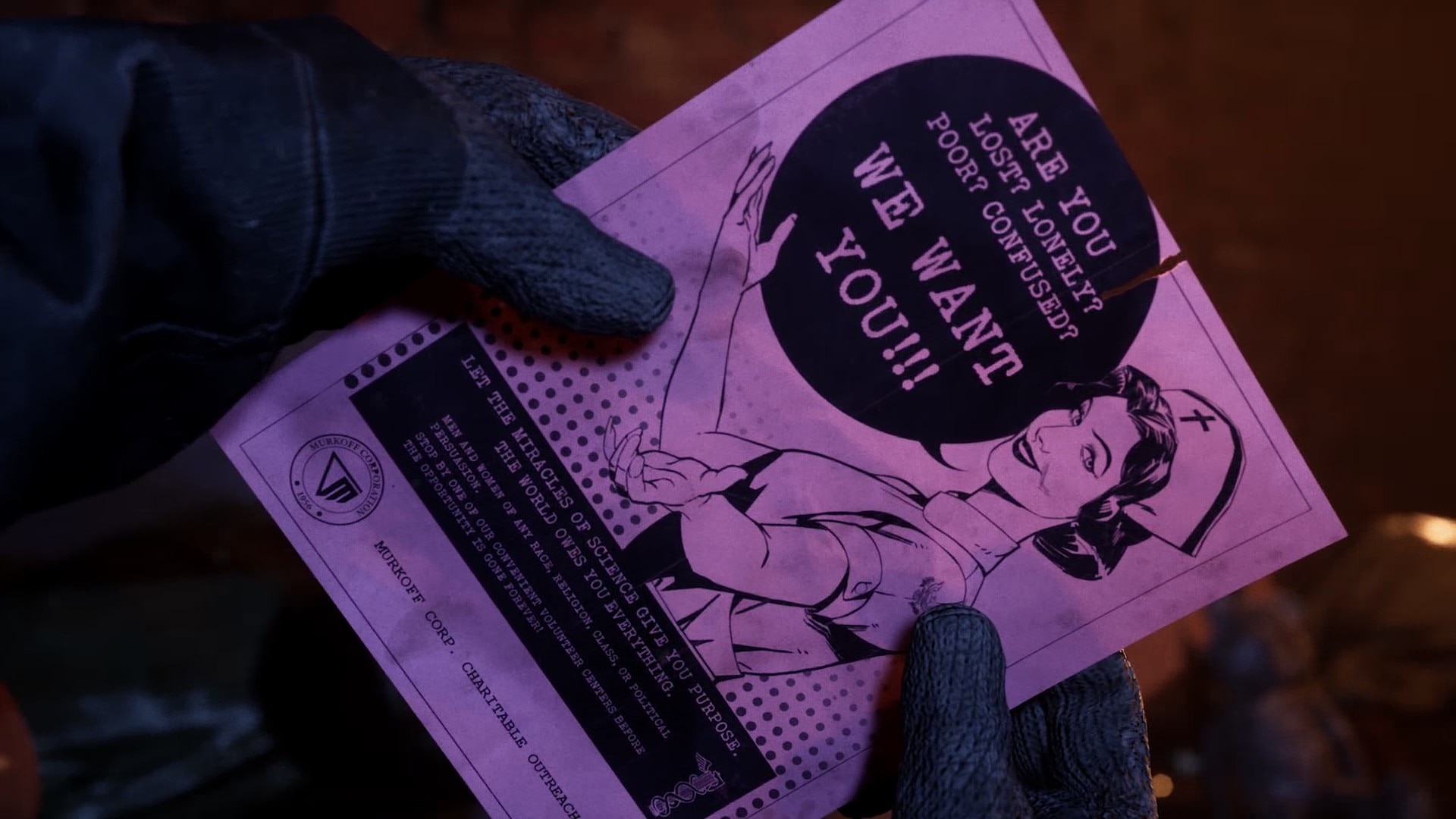
While the game has been released on PC, PS5, PS4, Xbox Series X/S, and Xbox One this year, The Outlast Trials has been available through Steam’s Early Access program since May 2023. I do not often play Early Access titles as I like to wait until the 1.0 release to get the truest intention of the game. Even so, for a special Halloween stream with myself and Ian, we decided to check out The Outlast Trials and were quite surprised with how well it captured the Outlast single-player components and thrust it into a cooperative game. After that experience, I was excited to see the full product. The developers used the feedback from players in its Early Access state over the last 10 months to tweak elements and then drop the big 1.0. This added a new location, challenges, tools, and finally arrived on consoles.
The Outlast Trials is set in 1959 at the height of the Cold War in which The Murkoff Corporation has been driving a dishonest program to recruit people for their experiments. These people are abducted and locked within a secret Murkoff test facility in which before they are introduced, they are operated on. This painfully involves having night vision googles drilled into their skull. These people, known as Reagents, are then sent on a series of trials through constructed environments within the facility, which are connected through a tram system. These trials are to test the mental and survivability of the reagents to see if they are compatible with the therapy indoctrinated by Murkoff. The Outlast Trials does not have much of a story that is front and centre of the game, rather, unlike a cinematic single-player experience, this game brings its details mostly through evidence hidden around the environment and the occasional chatter from some of the inhabitants in the facility who will speak to the reagents. I expect some brilliant YouTube video explanations about the story, as there is a lot in these documents that explain exactly what is going on and links to future happenings from the original Outlast. What this game makes up for the lack of direct storytelling is how each trial brings its characteristics to make them memorable for all the most extreme reasons.
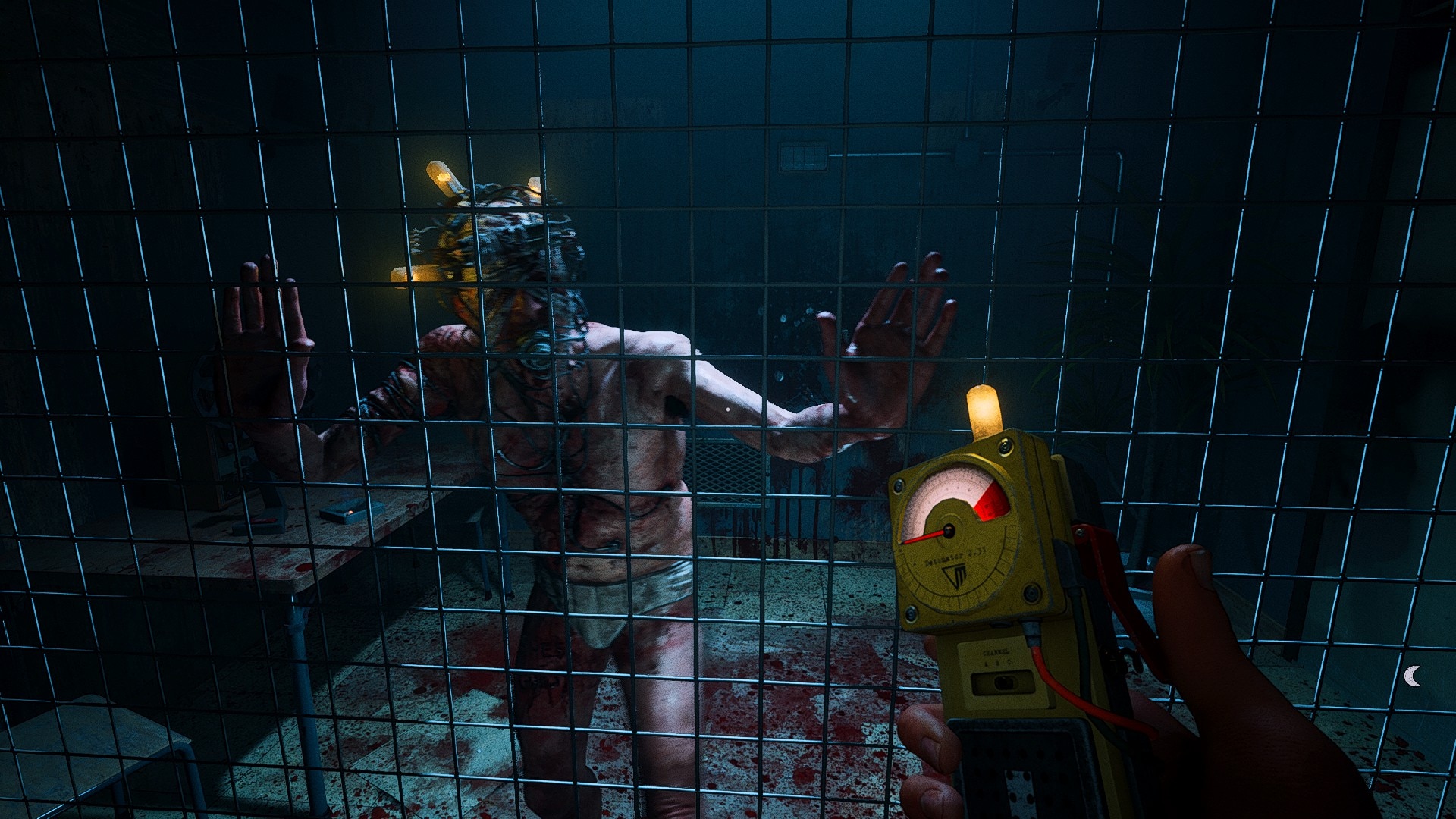
Seriously, some of the topics that are brought up in The Outlast Trials are some of the most extreme I think I can remember witnessing in a video game. One level, “Cleanse the Orphans“, is set within an orphanage with various rooms, classrooms, dorms, a kitchen, a basement and a church. In here nuns are in suggestive positions that look like they are giving themselves some pleasure, kids are bowing and snorting drugs in their beds and there is a guy out with his penis in full display on a cross who is part of one of the final missions in this trial to slice his legs off with a saw so that his flesh and blood can be fed to the children. Sounds traumatic? Right? And it is, but I guess the way they get around it is that these nuns and children are prosthetic dolls and not real, only the guy with his dong out that is sliced up is real.
This is how most of the trial environments are set up, with the person getting punished, the one who is real, and the rest of the environment is filled with animated dolls. I have seen other things such as dead bodies with drills up their anus, converting a human into a sex doll by altering his body and moulding him through wax. Some scenes could easily come from the Saw movie franchise. It sure does bring the shocks the first time around, but as with anything that has been experienced once, the shock value vanishes after playing the same level multiple times and then it simply becomes part of the environment as players become accustomed to it, or maybe that is the indoctrination that the game is fully going for with its concept?

Missions are gathered in what the game calls Programs. There are three permanent programs to get through, although two are locked until the first program is completed. Missions are split into two categories, trials and MK-Challenges. Trials are the main missions featuring multiple objectives set through the whole environment and often last 30-45+ mins to finish while MK-Challenges are shorter missions, often with a solo objective and different starting points within an environment. For example, one MK-Challenge called “Feed the Children” is set in the basement, outside gardens and kitchen of the Orphanage and requires reagents to find bottles of bleach to mix within the soup to feed to the children. Another one, “Gather the Children of God”, is set within the lobby and dorms of The Orphanage and requires finding a required amount of mannequin kids to rip their bodies in half and take back to the van. One thing to give The Outlast Trials credit for is its inventive mission themes that make something as ordinary as finding a key or transporting an item to another location much more impactful, or should that be horrific?
Fans will feel at home coming into The Outlast Trials. The gameplay continues what was seen in the previous entries, but now in smaller, closed-themed environments with a few tweaks. Within these missions are enemies that scout around looking for reagents. Occasionally new foes will enter the arena through lab doors that are situated around. These will alert with flashing lights to let everyone know a new foe is appearing. Foes can be anything from deformed, old, failed reagents popping out of barrels or lockers, crazy people with knives, giant dudes, who are like twice the size of the player and love to show off their penis (the male sex organs seem to be a thing in this game), as they walk around naked using their brute force or a giant axe to murder players. Along with the standard enemies are two boss-esque characters, Mother Gooseberry or Sergeant Leland Coyle, who, depending on the environment, will patrol at key points in the mission. Like with any enemies, none of these can be defeated, only stunned, but these two characters deal more damage and can execute players to end their lives rather than be left to bleed out on the floor, the latter allowing time for cooperative players to revive them.
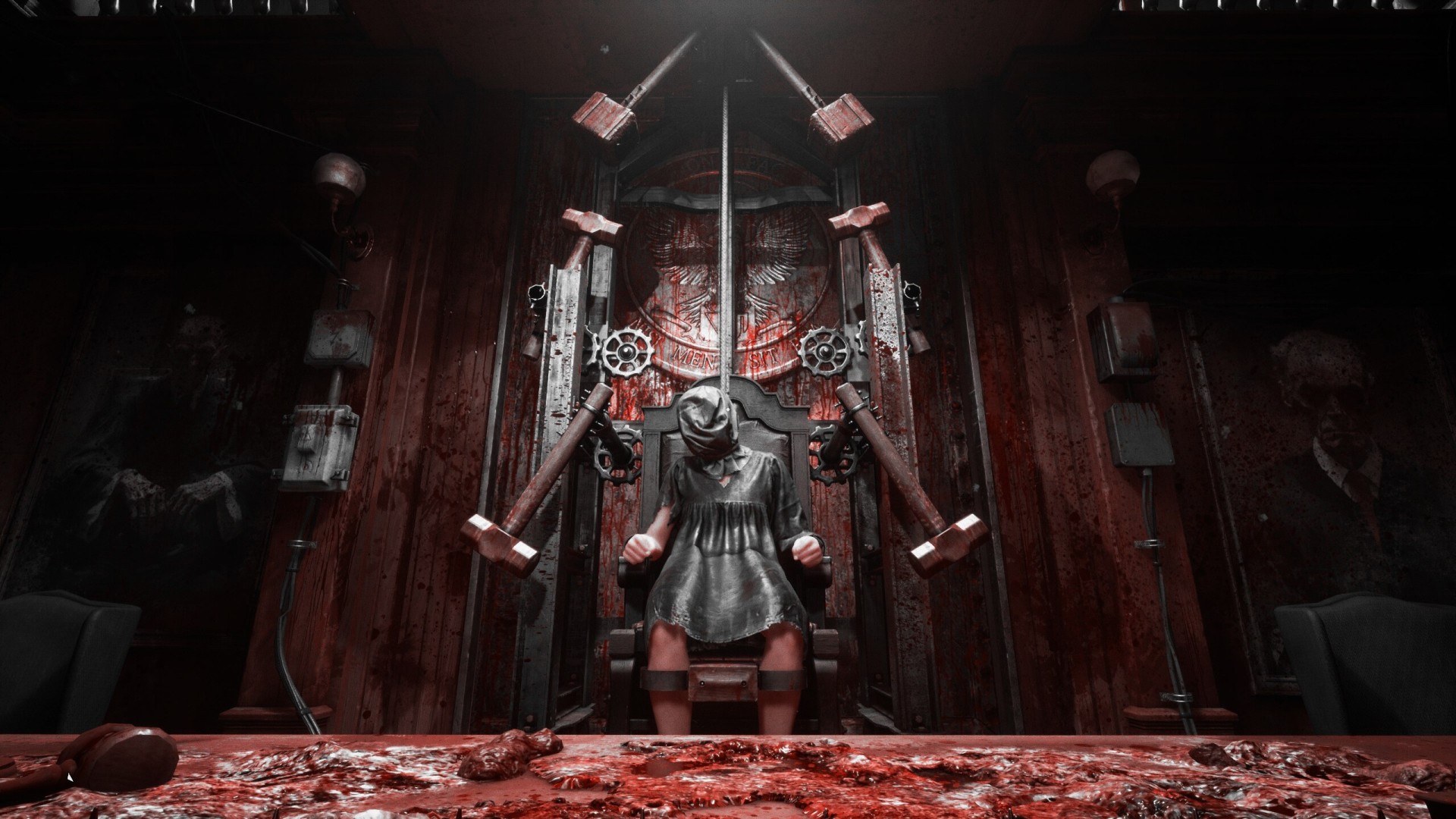
Traps are also placed all over the place. Hanging tin cans, mines on the ground and broken glass will draw the attention of nearby enemies. Crouching or walking rather than running helps avoid being spotted by wary enemies. If enemies do manage to see or hear you, hiding in the lockers or barrels will provide sufficient cover or even running into the dark and turning on night vision, which is powered by batteries that can be recharged by finding batteries during the mission, can confuse and eventually lose enemies. Unless it’s a situation with foes that wear night vision goggles, in which case light is your ally against these enemies because they cannot remove them from their eyes. Trying to sprint away to find a safe spot is tense. The music hits and the suspense increases. It is easy to sometimes turn around the corner and end up running into another foe and be met with a punch to the face and sent tumbling to the floor.
Stamina has a metre, so rush actions will reduce this until empty and it cannot be used until it has recharged. Reagents only have 4 health bars with a hit often taking them down by one or two depending on the level modifier (more on that in a bit). One last metre is the Psychosis bar. This acts as the mental state of the player. As this drops, mainly from being induced to psychosis gas from traps or the bastard Pusher who pops out, grabs the player and sprays gas in their face to instantly remove all three bars and put the player into a state called full psychosis. At this point, the player must run away from the manifesting entity known, as the “Skinner Man”, who will chase the player and damage them until psychosis ends. Pain in the ass sometimes, as this state messes up the visuals with a disorienting effect to portray the destruction of the mind; funny seeing it from another point of view, as other players will see the infected player run around with their hands on their head screaming. Surviving this timed event will restore all mental metre, as does the antidote spray.
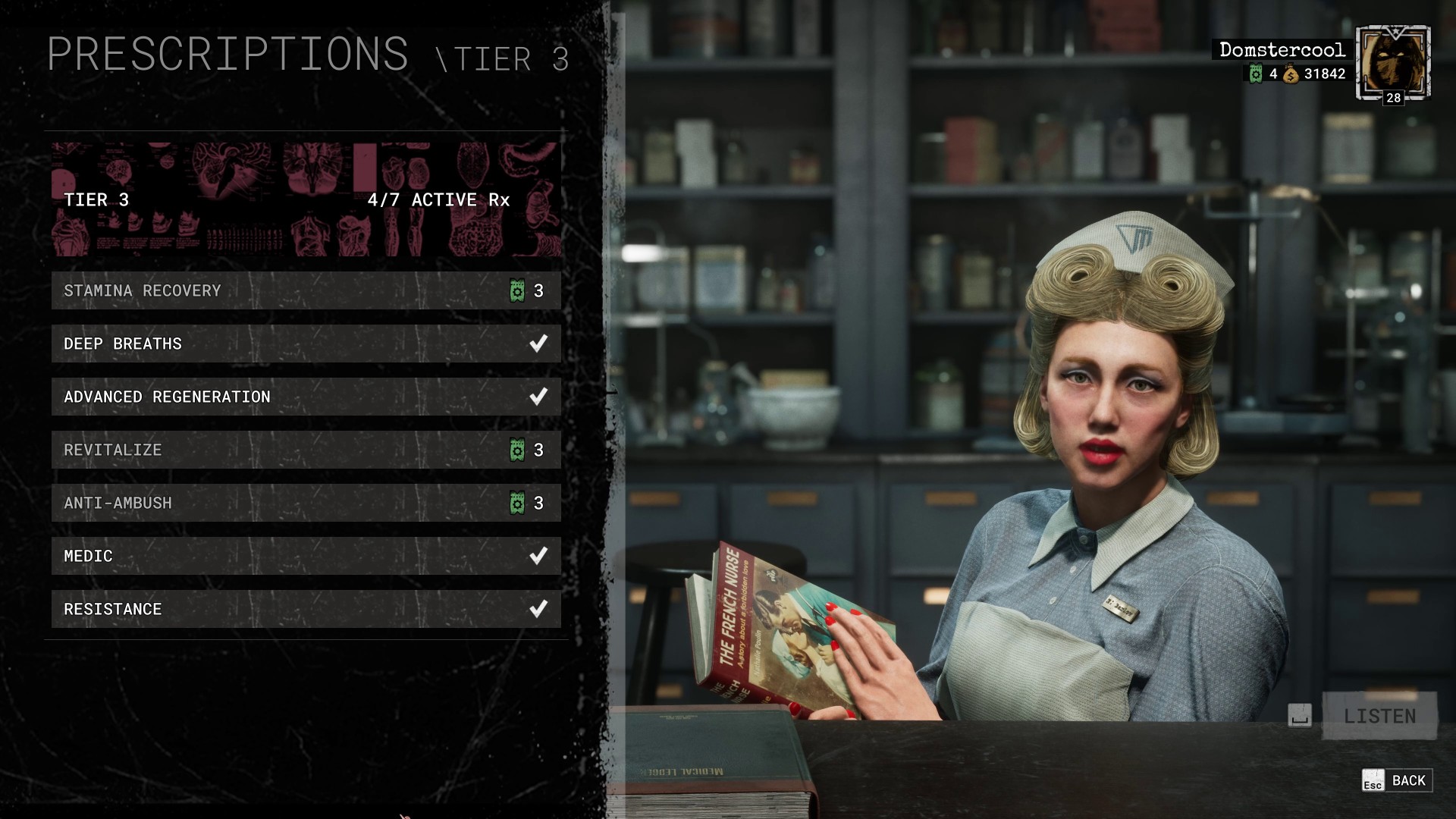
Health kits, syringes (which revive players), batteries (which restore night vision), bottles, and bricks (used to distract or stun enemies) are among the items that can greatly impact the outcome of a trial in favour of the player. These items are closely tied to the game’s experience and levelling system. As players attempt trials, they earn experience points, with higher ratings granting more XP. Levelling up rewards players with green vouchers, which can be spent in the shops located in the Sleep Room. The Sleep Room serves as a lobby where up to 16 players can gather, either to form parties or challenge each other in activities like arm wrestling or chess.
Within the shops, players can find rigs, which are four special items, but only one can be equipped at a time. These rigs possess unique abilities such as stunning, blinding, healing, or even seeing enemies through walls. However, rigs have lengthy cooldown periods, usually lasting 90+ seconds. Despite this, they provide a significant advantage to players during trials. Additionally, players can purchase skills and modifications from individuals in the Sleep Room. These include permanent upgrades like additional prescriptions (enabling sliding, regenerating health, increasing stamina, etc.) and Amps; unique perks that can be equipped, up to three at a time, to alter certain behaviours. For example, an Amp could grant the ability to walk on glass silently, make bottles louder, heal while hiding, or reduce psychosis time. With a maximum level of 65, unlocking all the available content will require a considerable amount of time. Therefore, it is advisable to make purchases that align with your playstyle as these will be more beneficial.

Blue vouchers are earned by completing trials/MK-Challenges and are used to unlock the final challenge to escape the facility. You need 20 vouchers to take on the last mission, which is solo only. This does require some adjustment after playing cooperatively. While this may frustrate some players used to playing with friends, the final mission is not lengthy. Upon completion, you can create a new character and earn 20 more blue vouchers. This is the cycle of The Outlast Trials’ gameplay. Once you conquer the 15 challenges in the initial program and release the first reagent, Program X becomes available. Program X is packed with 12 trials and MK-Challenges, but this time they are more challenging due to the addition of variators (modifiers). Brace yourself for tougher enemies, an increased number of traps, enemies that are more alert to sound, and doors heavily barricaded. You get the idea. Overcome these obstacles, earn the release tokens, and unlock another reagent. However, this is where The Outlast Trials begins to show its weaknesses. The next program, Program Ultra, presents a challenge with 2 trials and 4 MK-Challenges that are particularly difficult due to its modifiers. However, unlocking it requires three reagent releases, not two. Players must replay existing trials or take part in weekly trials, which are modified missions from the main game. The repetitive nature of returning to the police station to Kill the Snitch for the eighth time emphasizes the necessity for more environments or missions to keep players engaged until the end of the game.
Red Barrels has demonstrated a promising indication of their commitment to the future of the game by presenting a roadmap that encompasses various new elements such as modifiers, special events, new trials, MK-Challenges, rigs, amps, and enemies. This comprehensive plan bodes well for the game’s development and evolution. I just wish that the content included was enough to get players to the last program unlock without having to heavily replay it. While striving for better grades may be enjoyable, the initial excitement and horror tend to diminish with each subsequent playthrough.
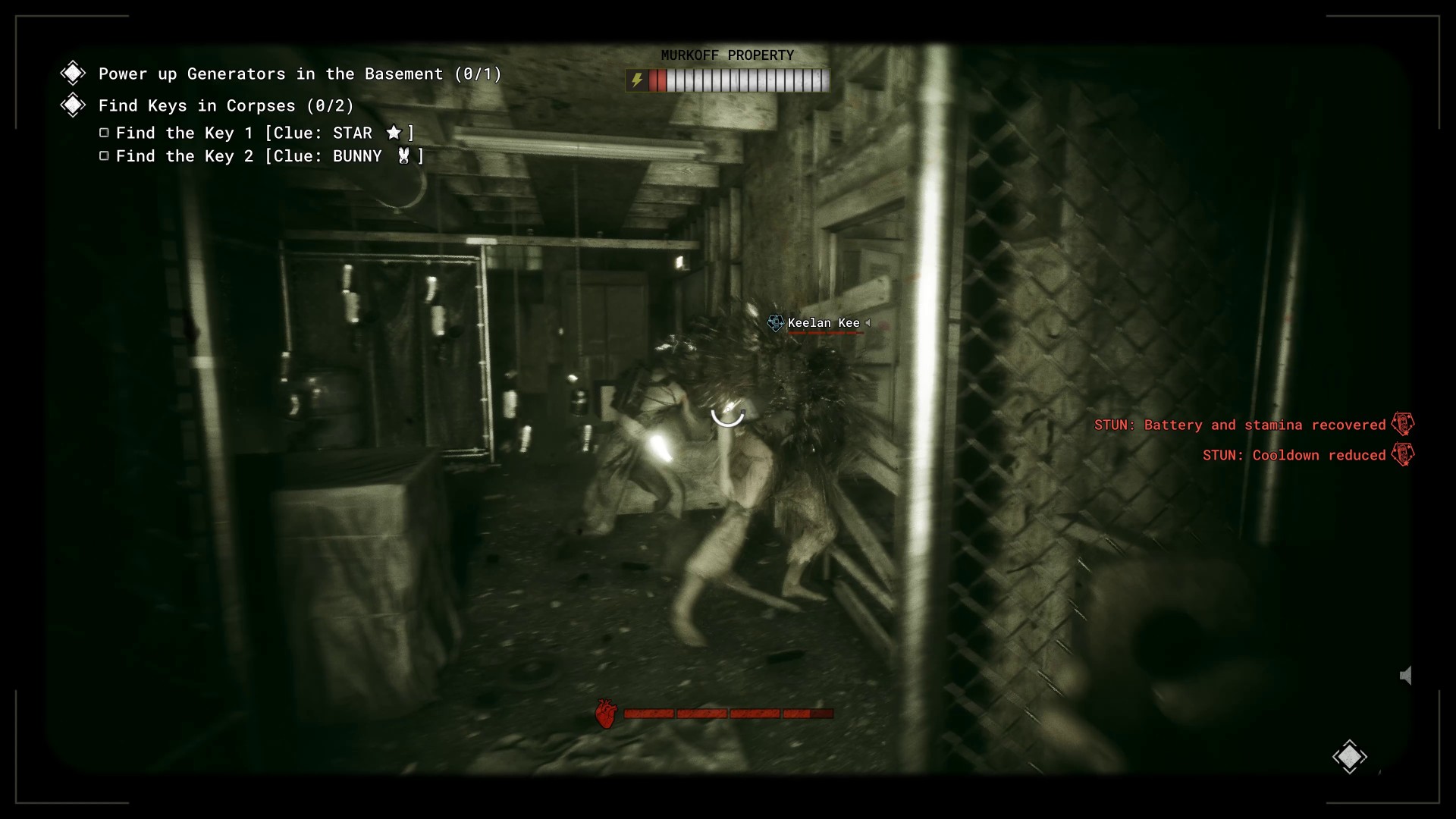
Regarding the cooperative aspect of the game, it can indeed be frightening. Although playing with friends may slightly diminish the sense of dread, witnessing the panic spread among players when the trial takes an unexpected turn adds tension. Additionally, being caught off guard by jump scares or encountering boss-class enemies can still elicit a heightened heartbeat. In my personal experience, I primarily played in a group of two. As more players were added to the four-member team, the fear factor gradually diminished due to the increased ability to save teammates. The game also adjusts its objectives to accommodate larger groups, such as requiring the retrieval of five keys instead of the initial three. One surprising aspect is that the Red Barrels successfully transformed Outlast into a cooperative game while effectively preserving the elements that made the original game so compelling. This achievement is further enhanced by the exceptional visuals and sounds, which effectively capture the horrors in each themed location and the nightmarish foes that inhabit them. The Outlast Trials effectively weaves a dark narrative, evident in its mature-themed content and heart-pounding soundtrack.
In the end, The Outlast Trials offers an enjoyable horror game that makes for a unique cooperative experience. The developers have managed to transfer the series’ formula into a way for it to work here, making it unlike anything else in the cooperative space. While there are indeed other horror games that centre around cooperative play, such as the recent influx of spirit hunting games like Phasmophobia, the overall vibe and gameplay experience are completely different compared to something like The Outlast Trials. It takes a darker twist, almost like elaborating on the traps seen in the Saw franchise and converting them into fully fleshed-out challenges with horrific scenes players will witness during the trials. Despite an impressive beginning, the game disappointingly fails to maintain its momentum due to a lack of distinct trials and challenges necessary for unlocking the programs. As players clock past 20 hours into the game, they may find themselves growing tired of the repetitive environments and mission objectives. However, there is optimism that the developers’ planned support will rectify these shortcomings and enhance the overall experience. As it stands, this surprisingly good and dark, bloody horror experience is a refreshing entry to play with friends for a few hours that will surely leave a lasting impression or induce many nightmares for days to come.
